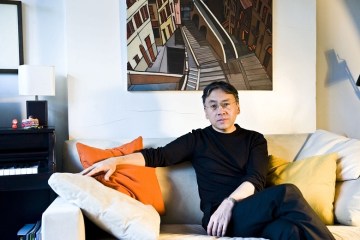For the ageing writer, not permitted the luxury of withdrawing from the front line, there are three options, one of Britain’s leading authors has said. To cope with the decline in faculties, Kazuo Ishiguro argues, writers can be either Neil Young, Philip Roth or Bob Dylan.
The Booker Prize-winning novelist said he was “morbidly fascinated by the late style” of writers. He claimed that most authors reached their peak before they turned 45.
He confessed that his “imagination will not work as fast as it used to”, adding that writers do not have the ageing footballer’s option of “dropping back into midfield, not running around so much, and putting your foot on the ball and pointing a lot”.
So older artists tend to fall into three camps, the author of The Remains of the Day said. Like the 69-year-old Canadian Neil Young, they can “keep on doing exactly what you always did with great enthusiasm. If you are good enough to start with, the chances are that you are still going to be fairly good and carry on bashing on.
“That’s an option, a little bit of decline, you just accept that,” the 60-year-old author said.
Advertisement
The next model could be termed the “Roth one”.
Ishiguro said: “We can do the distilled, concise summary of all the stuff that you were doing before. A very precise novella, something that seems to have everything, pared down. There are some very fine examples of that happening; Philip Roth’s Nemesis, Cormac McCarthy’s The Road and Gabriel García Márquez’s Chronicle of a Death Foretold.”
Ishiguro has just published his seventh novel, The Buried Giant, which comes in at a respectable 352 pages. However, he said he was not enthusiastic about accepting that he was incapable of sustaining a longer form of novel.
The writer, who was born in Japan but has British citizenship, has been shortlisted for the Booker Prize four times.
“Maybe I should be paring myself down,” he said. “But there’s a part of me that is reluctant to do that. I don’t think I have the attitude at the moment for the pared down final work.”
Advertisement
Which leaves the Bob Dylan model, a way of working that Ishiguro termed attractively “dangerous”. Citing Dylan’s Time Out of Mind album from 1997, and Leonard Cohen’s latest songs as well as the Paolo Sorrentino film The Great Beauty, Ishiguro said these works “embraced the ageing process”.
“They beautify it without quite evading or avoiding the inevitable sorrow or patheticness of ageing,” Ishiguro said.
“There’s a richness in these works, an elegiac quality.
“There’s regret, acceptance, stoicism and there’s a different kind of poetry to the mind with some authority once you are approaching old age, which is harder to achieve when you are younger.
“I don’t want to write morbid stories about getting old, the everyday problems that people have.”
Advertisement
He said that examples of the Dylan model had managed to express a “rather gorgeous mix of regret and longing and fond memories”.
“When I see people like Dylan and Leonard Cohen writing these very beautiful songs about love affairs that have gone on for decades, sometimes they haven’t even been that happy, but this is what their life has been about.
“I find these things very moving. This is a known path for late style.”
Ishiguro said he had spent time trying to find writers whose best work came later than 45. “The slightly alarming thing was that people did reach their peak surprisingly early,” he told listeners at the Hay Festival. “This is slightly obscured by the fact that people win their awards later in life, or their prestige goes up and up. Lifetime achievement awards or Nobel prizes are for work they did when they were younger.”
Now that he was 60, he added to laughter, he was “reluctant to accept this thesis”.


